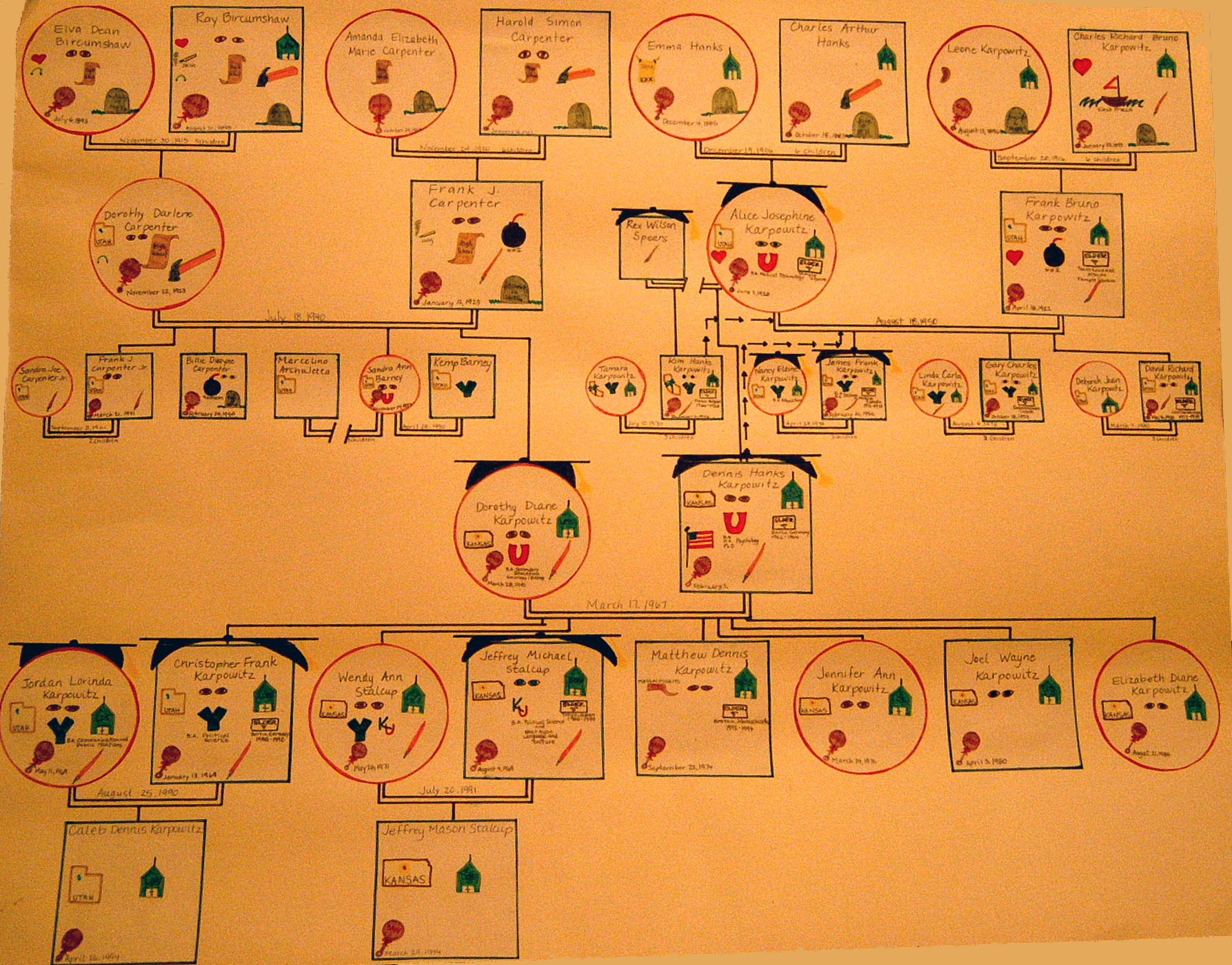A genogram is a type of family tree wherein it shows the names of the members of a family for a number of generations. It is different from a pedigree chart in the sense that a genogram is more complex. A pedigree chart merely illustrates the family layout through names and dates. A genogram displays medical histories and family relationships. This is often used in the field of medicine and psychiatry to trace behavioral or medical patterns, in different medical centers which sometimes offer work and residencies, and you can browse our residency vacancy listings to find open positions in these centers.
Things you’ll need:
- List of genogram symbols
- Paper
- Pen
The Steps:
- Identify the purpose of your genogram. A genogram is usually used in genealogy, medicine, psychology, social work, family therapy, research and education. The different types of genograms use different symbols, but the general symbol used for all types are the square, circle and lines. Squares denote male family members while the circle is for females. Lines refer to the type of relationship a symbol has with another symbol. A straight line can mean a union or marriage. Dotted lines mean the two symbols are partners who are living together. Non-medical genograms used the basic square, circle and line symbols. Medical genograms include other symbols placed inside the square/circle and colors. Triangles are also used in medical genograms to denote pregnancy. The thickness of the lines drawn in a medical genogram give a different meaning. A square with a thick line means a biological son while a square with a thin line means a stillbirth male. Being able to know the purpose of the genogram would make it easier to construct as it will give you an idea on the information that you need to look for. If you’re making a medical genogram, ask if any of the family members are suffering from ailments or other medical conditions. For deceased family members, it’s crucial to ask the cause of death.

- Begin to trace you family tree to up to four generations. If you could not recall or is uncertain who the rest of your family members are, you can ask your parents or grandparents. If certain family members have children from other partners, include those information too. You can use these websites for genealogy to DIY.
- Get a copy of a list of genogram symbols. Make a basic genogram starting with your immediate family. If you’d like to add pets on the genogram, use a diamond to denote a pet. Use a triangle to denote pregnancy-related conditions: triangle for pregnancy, an “X” placed over a triangle means miscarriage and, a big asterisk sign placed over a triangle means abortion. Put names under each shape so you’d know which particular family member is being referred to in the genogram. The male parent is placed on the left side of the chart while the female parent is on the right. For same sex relationships, it is advisable to still use a male-female relationship rather than a female-female or a male-male association. For family members whose had multiple partners or spouses, always start with the first spouse/partner. If it’s the male family member whose had multiple spouses/partners, the first circle to be placed beside him is the first spouse/partner. Then the succeeding spouses/partners will be placed to the right of the first spouse/partner. If it’s the female family member whose been in multiple marriages/partnerships, first square to her left is the first spouse/partner. Succeeding spouses/partners will be placed on the left side of the first spouse/partner. Place the oldest child to the left side of the family. The youngest to the right. These are the basic rules of mapping out the genogram.
- Check the genogram symbol list and look at the symbols for relationship lines. Connect the different shapes using relationship lines. Continue building until you’ve mapped out four generations. If you’re making a medical genogram, refer to the list of medical genogram symbols and adjust the content, line thickness and color of each shape.